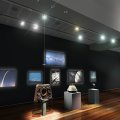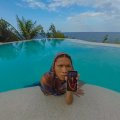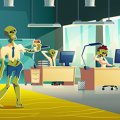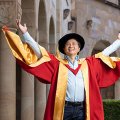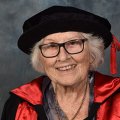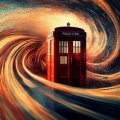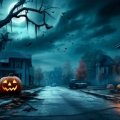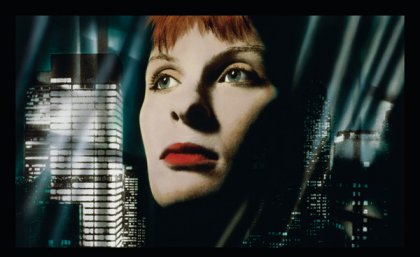
An exhibition featuring 11 artists who left Queensland in the late 1970s and early 1980s, largely in reaction to the political and cultural milieu of the Joh Bjelke-Petersen era, opens at The University of Queensland Art Museum on 16 June 2012.
Artists include Barbara Campbell, Jeff Gibson, John Gillies (with The Sydney Front), Ross Harley, Rosemary Laing, Lindy Lee, Fiona MacDonald, Tracey Moffatt, Robyn Stacey, Mark Titmarsh, and Gary Warner.
“These talented young artists joined an exodus out of Queensland at the height of the repressive Joh Bjelke-Petersen government, at a time when students were protesting for the ‘Right to March’ and the cultural climate failed to welcome creative or questioning minds,” the Director of the UQ Art Museum, Dr Campbell Gray, said.
“Return to Sender is the first of a series of exhibitions we will present over the next few years that examine the local history of the visual arts in Queensland.
“Several of the artists in Return to Sender have gone on to establish international careers, and all of them have made significant contributions to the visual arts in this country – none have returned to live permanently in Queensland,” he said.
Considerable attention has been devoted to Queensland’s politics of this period, and to the radical protests and the live-music scene, but less attention has been given to the visual arts.
“Many people may not even be aware that the artists in Return to Sender came from Queensland,” exhibition curator and UQ Art Museum Associate Director (Curatorial) Michele Helmrich said.
“In researching this exhibition we discovered that a number of the artists participated in demonstrations and street marches, some were detained in the Brisbane Watch House, and several recall police surveillance, harassment and brutality.
“It could be argued that their work continues to demonstrate a political subtext or sense of questioning and disquiet that is the outcome of this formative period, when, as students, they experienced a subculture of resistance,” she said.
For many of the artists, the raw energy of Queensland’s punk/post-punk culture during these years played a significant role in their lives; they played in bands, photographed and made videos of bands, and frequented live-music venues.
The works in Return to Sender were made in the 1980s and early 1990s, and primarily comprise photography and other forms of photomedia, including video and Super 8 film; and performance-based video.
While the exhibition is inspired by the exodus from Queensland in the late 1970s and early 1980s, it also invites a focus on ideas that were then circulating in Australian art, especially in Sydney, where many of the artists were subsequently based.
This period was marked by the influence of postmodernism and cultural theory that circulated through journals such as Art & Text (Melbourne-based, later Sydney) and On the Beach (Sydney-based).
Several of the artists were associated with these journals in Sydney over the years; others had their artworks featured on their covers or within their pages; and, for all, "theory" provided a fresh impetus for contemporary art.
Major works have been loaned for the exhibition from the Art Gallery of New South Wales, Art Gallery of South Australia, Griffith University, National Gallery of Australia, Newcastle Art Gallery, Queensland Art Gallery/Gallery of Modern Art, Rockhampton Art Gallery and CQUniversity, with additional works loaned from private collections and the artists.
Works from The University of Queensland Art Collection also feature.
A publication will accompany the exhibition, with essays by Professor Ross Gibson, Dr Martyn Jolly, Associate Professor Rex Butler, and the curator Michele Helmrich.
Both Ross Gibson and Martyn Jolly were part of this Queensland diaspora.
Several of the artists will be in Brisbane for the opening event on Friday 15 June 2012.
The UQ Art Museum is located on University Drive, St Lucia Campus, and is open daily 10am – 4pm.
Curator: Michele Helmrich
PUBLIC PROGRAM:
Friday 15 June 2012: 5pm – 6pm
Venue: UQ Art Museum, University Drive, St Lucia campus
A conversation in response to the exhibition Return to Sender with Professor Ross Gibson, artists John Gillies and Robyn Stacey, and chaired by the exhibition curator, Michele Helmrich
MEDIA ENQUIRIES:
Michele Helmrich, Associate Director (Curatorial) and curator of Return to Sender Phone: 07 3346 8759; Mobile: 0418 754 983; m.helmrich@uq.edu.au
High resolution images can be downloaded at: http://omc.uq.edu.au/images/ReturntoSender/
This project has been assisted by the Australian Government through the Australia Council, its arts funding and advisory body.
This project has received financial assistance from the Queensland Government through Arts Queensland.
Supported by the Gordon Darling Foundation.
Return to Sender: Introduction to exhibited works (selection only)
Robyn Stacey photographs from her series Kiss Kiss Bang Bang 1985–1988 and Redline 7000 1989 are evocative of film noir and pulp-fiction book covers: in the former series she staged scenes of characters in trouble as if dramatically lit fragments from film; the latter appear as panoramic movie posters, the face of the femme fatale overlaying scenes of the city at night.
Jeff Gibson, in his series of dis POSTERS 1986, took black-and-white graphic imagery from movies and television, and combined them top and bottom with poster-like text in between, the ‘dis’ prefix disrupting any message the words deliver. The dis POSTERS were exhibited in galleries and in public spaces.
Lindy Lee’s repeatedly photocopied grids of Old Master portraits reassert a melancholic ‘aura’, while Tracey Moffatt’s trio of repeated photographs of her uncle in colours of ‘mulberry’, ‘wine’ and ‘cream’ cast the unnamed Indigenous man with the allure of the movie idol. The large-scale photographs recall Andy Warhol’s repeated images of famous faces.
In Rosemary Laing’s appearance 1993, a spectacular sunset image is placed above a colour spectrum, light streaming through the lightbox in much the same way as sunlight streams through the dark clouds (doubled like a Rorschach inkblot) or light streams from a TV set; in the televised image, the pixel splits the spectrum. Laing re-conceived how nature could be represented in photomedia.
Return to Sender features the premier of the digitally re-mastered version of the video work Techno/Dumb/Show 1991, a collaboration between Australian video artist John Gillies and performance group The Sydney Front (1986–1993) – this work was one of the most widely shown Australian video works made in the 1990s and won a number of awards, including First Prize at Videobrasil, São Paulo 1992.
Barbara Campbell’s Conradiana 1994 comprise a wall of rice paper scrolls on which she manually typed Joseph Conrad’s novella Heart of Darkness six times, and a video of a Disneyland Jungle Cruise. The work explores women’s history – their history behind the scenes – through an oblique reference to Eleanor Coppola’s 1979 memoir, Notes on the making of Apocalypse Now, and to the 1937 Stinson crash in Queensland’s Lamington National Park, which figured in Campbell’s own experience as a young girl living at Lamington.
Fiona MacDonald returned to her home town of Rockhampton in 1993 and, using sepia-toned images of archival photographs, literally wove together images of members of the Rockhampton Club in the late nineteenth century – graziers and those with interests in the rich Mount Morgan mine – and non-members: Indigenous people, South Sea Islanders, the Chinese and women.
Using Super 8 film and video, artists Gary Warner and Mark Titmarsh sampled moving images from the TV, used a ‘cut-up’ technique. In Viva 1989–1990, Titmarsh combined appropriated footage with film shot from life, to produce a strangely haunting mash-up of genres.
Ross Harley explored video installation in public spaces, while Harley’s The Forgotten Adventures of Krazy Kat 1996 used animation and visual effects to capture the glam kitsch of Las Vegas as an homage to George Herriman’s ‘Krazy Kat’ comic strips of the 1930s and early 1940s.

